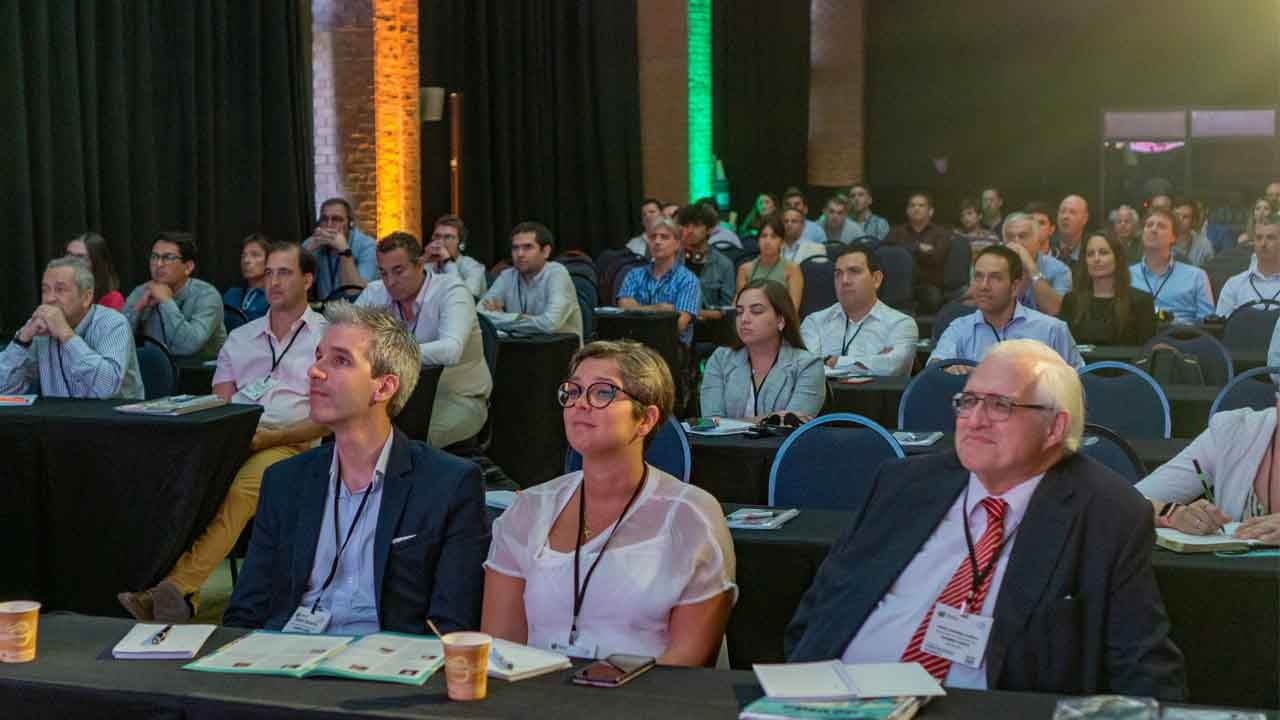Dynamic label market shines in Colombia
Stability, strong economic growth and sustainability flourish in the gateway to Latin America.

Colombia has a strong claim to be the region’s most dynamic label printing market over the past two decades.
A period of political stability and strong economic growth saw foreign direct investment surge in the 2000s and 2010s, while a growing middle class drove a boom in consumer demand.
The local label industry sprang to life, with converters
– including many recent entrants to the sector, often coming from a background in sheet-fed offset labels or wider-format printing – investing heavily in new technology.
The growth and dynamism of the local market was captured perfectly in 2014 when Label Summit Latin America took place in Colombia for the first time and attracted record visitor numbers to Medellin, beating attendances in the much bigger markets of Mexico and Brazil.
Recent years have matched the experience of many countries in the wake of the pandemic: a surge in growth as economies reopened in 2021; a dip caused by supply chain issues in 2022; and lower-than-expected growth last year as inflation hit consumer demand and excess stock worked its way through the system. Nevertheless, many in the local industry are optimistic of improving market conditions.
Recovery
‘The graphic communication industry faced important challenges in 2023,’ says Tatiana Duarte, president of Colombian graphic arts association Andigraf. ‘Production experienced minor growth compared to the previous year, as was the case in other manufacturing sectors. In this context, it
is expected that the first months of 2024 will allow us to resume a path of growth – anticipating a coming year with greater dynamism, especially from the second semester. This aligns with the economic expectations in Colombia and with the Drupa 2023 report, which revealed a recovery in the global graphic arts sector generating positive expectations for the year ahead.’

An important driver in this optimism is an increasing focus on environmental sustainability. ‘Many of our affiliated companies have adopted greener practices, reducing their environmental impact and leading the way to a brighter sustainable future,’ says Duarte.
‘Yupo is seeing double-digit growth in Colombia,’ says Alex Cruz, sales manager for North and South America at the synthetic material manufacturer. ‘Within Latin America, it is our second fastest-growing market. The sustainability benefits of in-mold labeling (IML) are the major driver – everyone is looking for more sustainable packaging, including Colombians.
‘IML is growing in the industrial sector, where we are seeing a shift away from direct print or wraparound labels and toward IML for its durability as well as its sustainability. And there is growth in cut and stack labels used in horticulture, which is a very important industry in Colombia.’
Arclad, the Colombia-headquartered self-adhesive material manufacturer, shares the optimism in its local market.
‘There was a reduction in demand in Colombia – and across Latin America – in 2023,’ says Carolina Jaramillo, Arclad’s marketing director. ‘Inflation impacted consumer demand and throughout the supply chain, companies began the year with high stock levels, having stockpiled following the shortages during the pandemic. For suppliers like us, there is also increasing competition from Asian manufacturers.
‘But there is a sense of optimism in the market and Colombia has always had a very dynamic label industry. There are lots of small businesses in the country and a strong culture of entrepreneurship. They know that their labels can’t just
be the cheapest option: They need to differentiate themselves from the crowd and showcase their innovation. Similarly, companies are paying much more attention to environmental sustainability, and they like the environmental performance of our sustainable materials.’
Jaramillo highlights growth in the private label sector as consumers, faced with high inflation, increasingly switch to cheaper goods to stretch their money further.
Though Mexico has been the primary beneficiary of the post-pandemic nearshoring trend – US companies wanting shorter supply chains which are at less risk of breaking down due to external events – Colombia too is well-placed to take advantage, believes Jaramillo. ‘Many of our customers in Colombia export labels to the US. Colombia is strategically located and this can provide more opportunities.’
John Vigna, Latin America sales manager for Mark Andy, says there is a lot of interest in hybrid technology. ‘Companies are keen to reduce costs and increase efficiency. There used to be a steadier flow of orders from the country but that has slowed a little recently, and across the Andean region in general — mainly due to politics. Companies are a bit more cautious and are waiting before investing. But that always changes eventually.’
Stay up to date
Subscribe to the free Label News newsletter and receive the latest content every week. We'll never share your email address.


